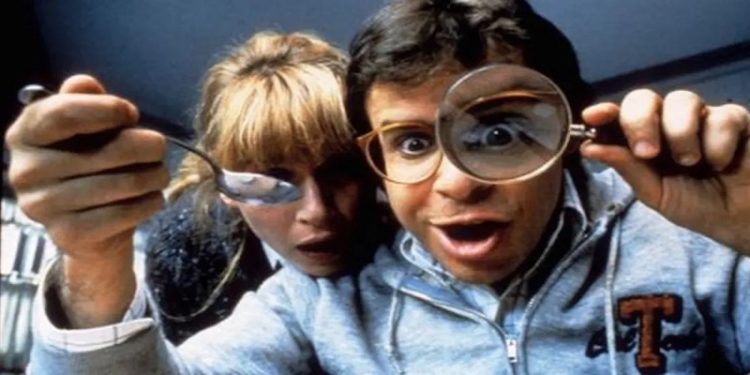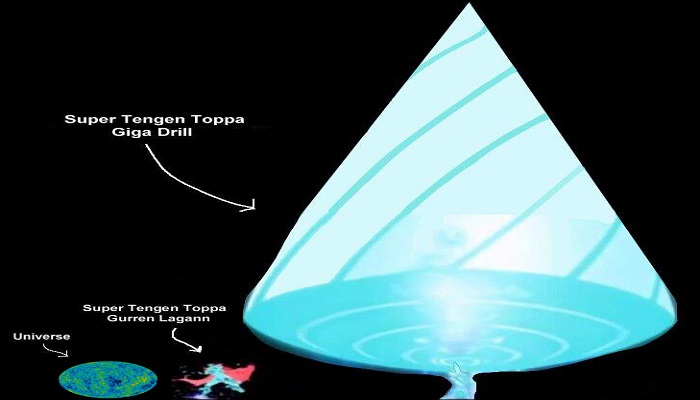A Matter of Scale

Scale is an important consideration when designing your campaigns, but it’s one overlooked too often because most GMs figure that scope is something that’ll be expanded upon throughout the campaign. Consider these different types of scale for your campaign.
Size
Books often invent fantastical worlds where entire civilizations are so small that they take up space within an atom, whereas others are so large that they can easily toss around galaxies. Some examples:
- Microscopic
- In DC comics The Microverse is the foundation of all reality. It was discovered by Professor Ray Palmer (The Atom) when he used his Bio-Belt to shrink to a sub-atomic level to investigate a problem deep within the nano-structure of the timeline.
- In Dr. Seuss’ book “Horton Hears a Who,” the eponymous character tries to protect the Whos from other animals who can’t hear them.
- In the Disney classic “Honey I Shrunk the Kids,” the kids get shrunk to, as the quote goes, “we’re the size of boogers!”
- In “Arthur and the Invisibles,” the Minimoys are so small a few drops of water gives their entire civilization problems.
- The ants (and termites) in the Antz movie, as well as the characters in “A Bug’s Life,” are also (almost) microscopic, being they are far beneath the notice of most humans.
- Tiny
- “The Littles” cartoon is about rat/ mouse people who live in secret in a house, unbeknownst to the adults who are living there.
- Similar to the above, Leprechauns, fey/ fae, household helping elves (Grimm’s fairy tales), winged fairies such as sprites (D&D monster), faen (Unearthed Arcana, player character) would also count in this category.
- Small: Small-scale would be the “little” races of halflings, Warrows (Dennis L McKiernan Midgar series), Kenders (Margaret Weiss/ Tracy Hickman Dragonlance series), and gnomes would count for this category.
- Man-Sized: This is the “default” size for most fictional universes; this is even true of most science fiction universes even when it doesn’t have to be the case.
- Giants are the next size up from man; this size can range from slightly more than twice the size of a man to being the size of a mountain. Depictions of the eponymous character in “Jack and the Beanstalk” faces one that makes him look tiny in comparison, small enough to hide among knickknacks on a table.
- Planetary/ Galactic sized
- Both Unicron of the Transformers franchise and Galactus of Marvel are planet eaters.
- In the final episodes of the anime Tengen Toppa Gurren Lagann, the mechas are using entire galaxies as weapons.
 Scope of effect
Scope of effect
- A severely limited scope of effect: At this scale, the scope of effect is something like a house, a back yard. The character’s actions have little or no effect on the outside world. Think the first Toy Story movie where Andy gets Buzz Lightyear, and the other toys are concerned about it.
- The Family scope of effect would one be only concerned those of the immediate and extended family. For instance, a story centered on a family’s journey would be concerned with its survival, struggles, drama, triumphs, and tragedies. Keep in mind that in the case of estrangement, abandonment, or those orphaned or adopted, the concept of family is more a thing that is built around one’s self, accepted from others vs. necessarily a matter of genetics. Many people feel that they find a family in friends as well, which is why many gangs or mafia organizations stress the importance of loyalty to this family, so they are not betrayed when one member has to go to jail.
- A community: This placement can go up or down on this list depending on how large of a community one is discussing. A community can be a neighborhood, or it can be the brotherhood of all people who do or have experienced a certain thing everywhere. For instance, the members of a secret society, those magic users who graduated from a specific school, or the camaraderie of those who are in the army.
- City: what the characters do affect a city or town; most games and stories start at this level to some extent.
- Kingdom: this describes characters who exert control or influence over the kingdom. This doesn’t necessarily mean that the character(s) are kings, ministers, generals, etc. Influence simply means that their activities can change the lives of those they interact with for the better or the worse. Toppling empires, killing dragons, assassinating rulers,
- Planet: this describes characters who have world altering abilities. Think of the fight scenes in the Dragon Ball series that destroy worlds, characters with “Wish” spells, or other, similar magic, or characters that can terraform the entire surface of a planet.
- Multiverse
- In the Ben 10 cartoon, there is an alien he has access to simply named “Alien X” who possesses godlike abilities of reality manipulation.
- Another character with godlike multiverse reality altering abilities is DC’s Darkseid, whose “true form” is so large that the physical universe can’t contain his essence.
- In both the TV shows Sliders and “Dr. Who,” the characters are traveling from one reality to another, affecting entire timelines and realities.
Time
Time is another method of scale that DMs need to consider. What is the time-scale of the storyline? How much time is required for the story’s events take place? Do they take place in a single instant between the time protagonist’s hanging and his death at the end of the story, as in the “An Occurrence at Owl Creek Bridge?” Or like in “The Legend of Zelda: Majora’s Mask,” does the timeline take place in three days? What happens if the poisoned king’s daughter doesn’t get the cure the PCs need to deliver to her in two weeks? How do the characters react to a creeping corruption that’s taking place so slowly they don’t realize what’s happening until it’s too late? Conversely, a game’s time scale can be hundreds, if not thousands of years, depending on how much in-game time has passed during a “time jump.”
Questions to consider
How do these various scales matter to the player?
What challenges will they face due to their size? How would being microscopic, as opposed to giant-sized effect the characters? Would being bigger (or smaller) increase their chance(s) of survival in the long run?
How does the scope of the game matter? How does a story looking at a community differ than one where the characters can shatter timelines and destroy realities at will?
How does the timeframe of the game (or the arc) affect the characters? Would the players push on despite being severely injured or outnumbered if they knew something significant was at stake should they not get back in time? Conversely, how would characters change their strategies if they could sleep past the problems of the present day as happens in the Underworld series?
I hope this article has given you some ideas on using various types of scales in your game.



